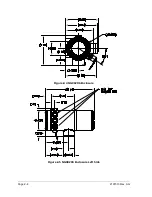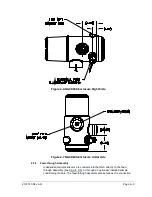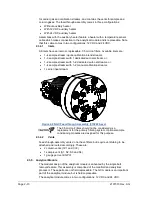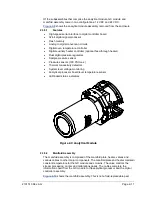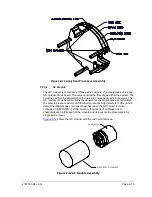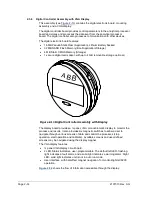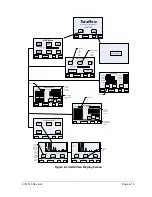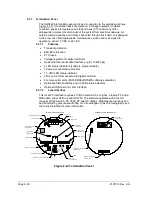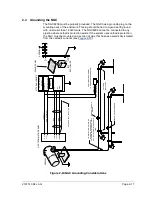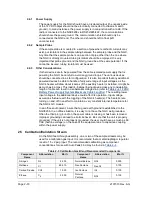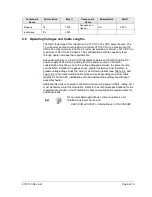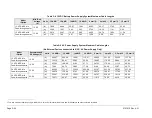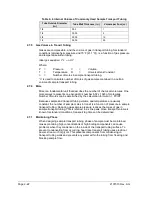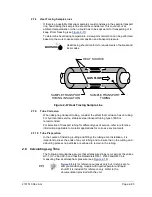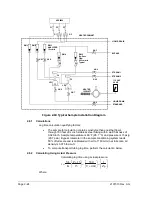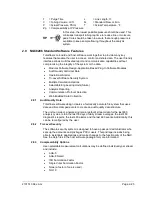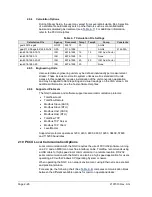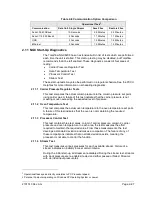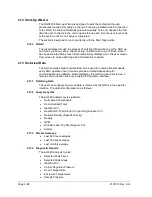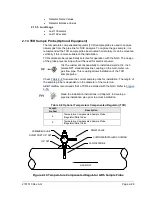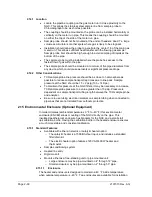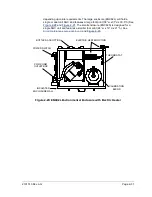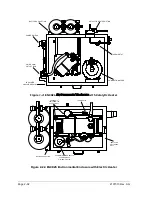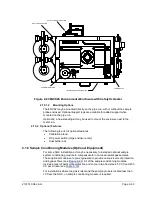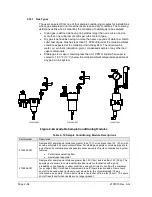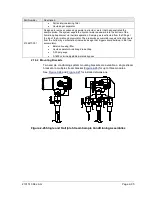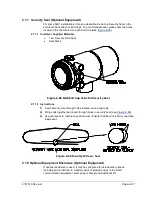
Page 2–22
2101510 Rev. AG
Table 2–6 Internal Volume of Commonly Used Sample Transport Tubing
Tube Outside Diameter
(in.)
Tube Wall Thickness (in.)
Volume per Foot (cc)
1/8
0.02
1
1/4
0.035
5
3/8
0.035
15
1/2
0.035
25
2.7.5
Gas Volume in Transit Tubing
Gases are compressible, and the volume of gas in transport tubing for standard
conditions (atmospheric pressure and 70
°
F [21.1
°
C]), is a function of gas pressure
and temperature within tubing.
Ideal gas equation:
nRT
PV
=
Where:
P
=
Pressure
V
=
Volume
T
=
Temperature
R
=
Universal Gas Constant
n
=
Number of moles in sample transport tubing.
“n” is used to calculate number of moles of gas sample contained in a certain
volume of sample transport tubing.
2.7.6
Mole
Mole is a fundamental unit that describes the number of chemical molecules. One
mole always represents one Avogadro’s number 6.02 x 1023 of molecules.
Number of moles can be determined by the calculation formula: n = PV/RT.
Because sample and transport tubing volume and temperature are usually
constant, the number of sample moles in transit is a function of pressure in sample
transport tubing. Reducing gas sample pressure reduces the mass of gas in
sample transport tubing. This is referred to as line peak. Once transport volume is
known for standard conditions, transport lag time can be determined.
2.7.7
Maintaining Phase
When designing sample transport tubing, phase of sample must be maintained.
Gases containing high concentrations of high boiling components can cause
problems when they condense on the inside of the transport tubing surface. To
prevent condensation from occurring, heat trace transport tubing uses electrical
power, stream or hot glycol. This prevents components from condensing on
transport tubing walls and prevents any water within the tubing from freezing and
blocking sample flow.

